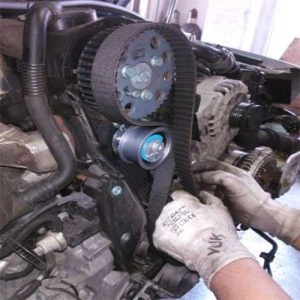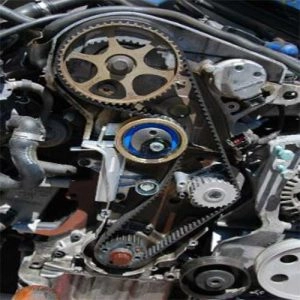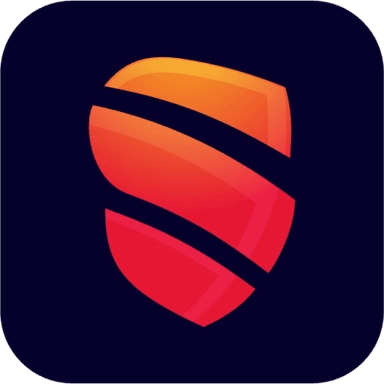The timing belt, also known as the camshaft drive belt, plays a crucial role in engine operations. It rotates and ensures the synchronisation of the crankshaft and the camshaft rotations, allowing the cylinders to operate at the optimal time and ensuring the continuous correct performance of the engine. However, if the timing belt is damaged or breaks, this leads to a decrease in engine functionality or a complete halt, often resulting in significant engine damage.
It is important to replace the timing belt at the specified time recommended by the manufacturer, as it is constantly exposed to pressure, high heat, and challenging working conditions. Typically, timing belts are made from metal or rubber reinforced with nylon wires, and are constantly in contact with the gears and pulleys in the car.
Over time, the factory-made rubber belt expands, and its teeth may get damaged and break due to high heat. This leads to its failure and its unusability again. Conversely, the metal-made belt possesses better characteristics. This is referred to as the machine's chain, which has a longer lifespan. It can also withstand high temperatures, working similarly to the rubber timing belt.
In this article, we will discuss the timing belt, explain the difference between it and the engine chain, clarify the signs of belt damage, and when it should be replaced. Stay with us.
What are the differences between the timing belt and the engine chain?

It is necessary to clarify some differences between the timing belt (which is made of rubber) and the engine chain:
Firstly: The Timing Belt:The timing belt is distinguished by being made of quiet and light rubber, but it wears out quickly over time and must be replaced after a specific period. It does not provide long-term service, and experts and manufacturers recommend changing it every 5 years, or approximately after covering a distance of 100,000 km as a maximum by car. It is worth mentioning that rubber belts are typically used in economical engines.
Secondly: The Engine Chain:On the other hand, the engine timing chain is characterized by being made of metallic materials, which allows it to withstand high temperatures and ensures a longer service life. There is no need to replace it except during engine overhaul. However, the engine timing chain needs regular lubrication and makes a louder noise. It is more complex, heavier, and increases fuel consumption compared to the timing belt. It's worth mentioning that its maintenance costs more than the rubber belt because it requires changing the chain, as well as the chain tensioners and plastic guides. The engine timing chain is predominantly used in high-pressure engines, which require perfect timing and power.
Also read: Types of tire balancing and when it is needed.
What are the signs of timing belt damage?

When you have a damaged or broken timing belt, clear signs will indicate this. Here are three of the most common signs of a damaged timing belt:
Firstly: Engine Breakdown:The belt is connected to the pulleys to drive the crankshaft and camshafts. In some cases, the belt may slip off one of the camshaft pulleys, causing a cylinder to open or close prematurely and at an inappropriate time. This can lead to severe engine damage if the damaged belt is not replaced as soon as possible.
In addition to the aforementioned, the belt could slip off all the pulleys, and in that case, there will be no synchronization between the camshafts and the crankshaft. This can result in significant damage to the pistons, and the valves might break if they come into contact. Therefore, this could be disastrous for both your car and yourself, so it's imperative to address this issue swiftly.
Secondly: Decrease in Oil Pressure:If the timing belt is subjected to cracking and excessive wear, the teeth may break off and fall out of place, potentially ending up in the oil and mixing with it. This can lead to a significant and noticeable drop in oil pressure. Consequently, if sufficient oil and grease do not reach the internal parts of the engine, this can lead to their friction and damage at an advanced stage. This can sometimes mean the entire engine gets damaged. Therefore, if such a problem occurs, the engine must be overhauled or replaced with another one. Nothing better can be done than this.
Thirdly: Hearing strange noises from the engine:Since the timing belt is linked to several pulleys controlling the crankshaft and camshafts, the crankshaft can drive the piston arms inside the combustion chamber, while the camshafts operate the air and fire valves, send the required fuel to the combustion chamber, and dispose of the exhaust gases.
When the timing belt begins to crack and wear out, you may hear several noises coming from inside the engine due to a disruption in the synchronization of its components. For this reason, you may see the engine light on the dashboard. If you see this light, it is necessary to take the car to a maintenance center as soon as possible.
When should the timing belt be changed?

From the above, we can observe that it is difficult to detect timing belt issues until several problems have occurred in the car. Therefore, experts generally recommend changing it.Timing BeltApproximately every 5 years, or after covering about 100,000 km, the water pump that is connected to it and the tensioners should be replaced to ensure its optimal performance.

Comments